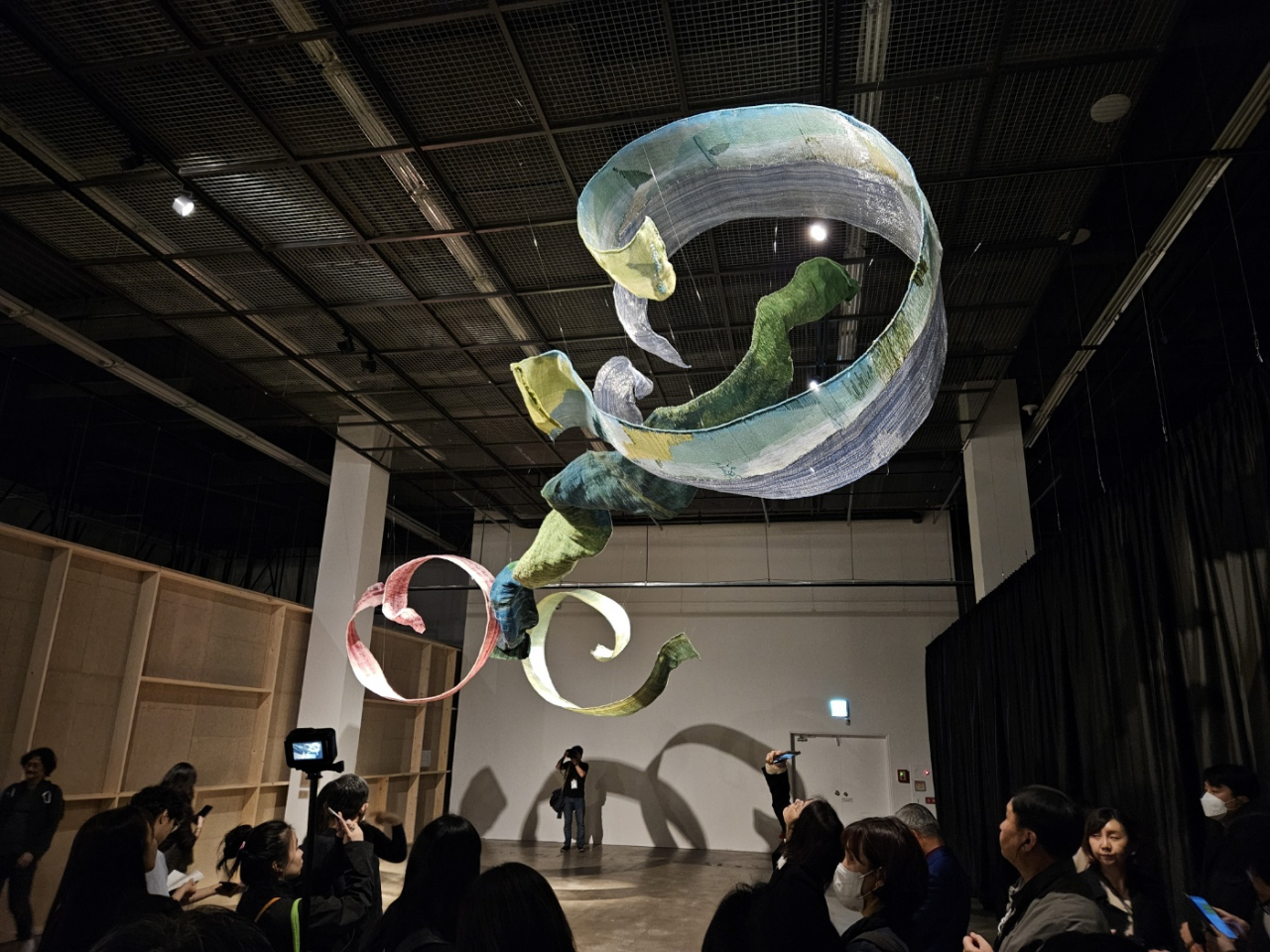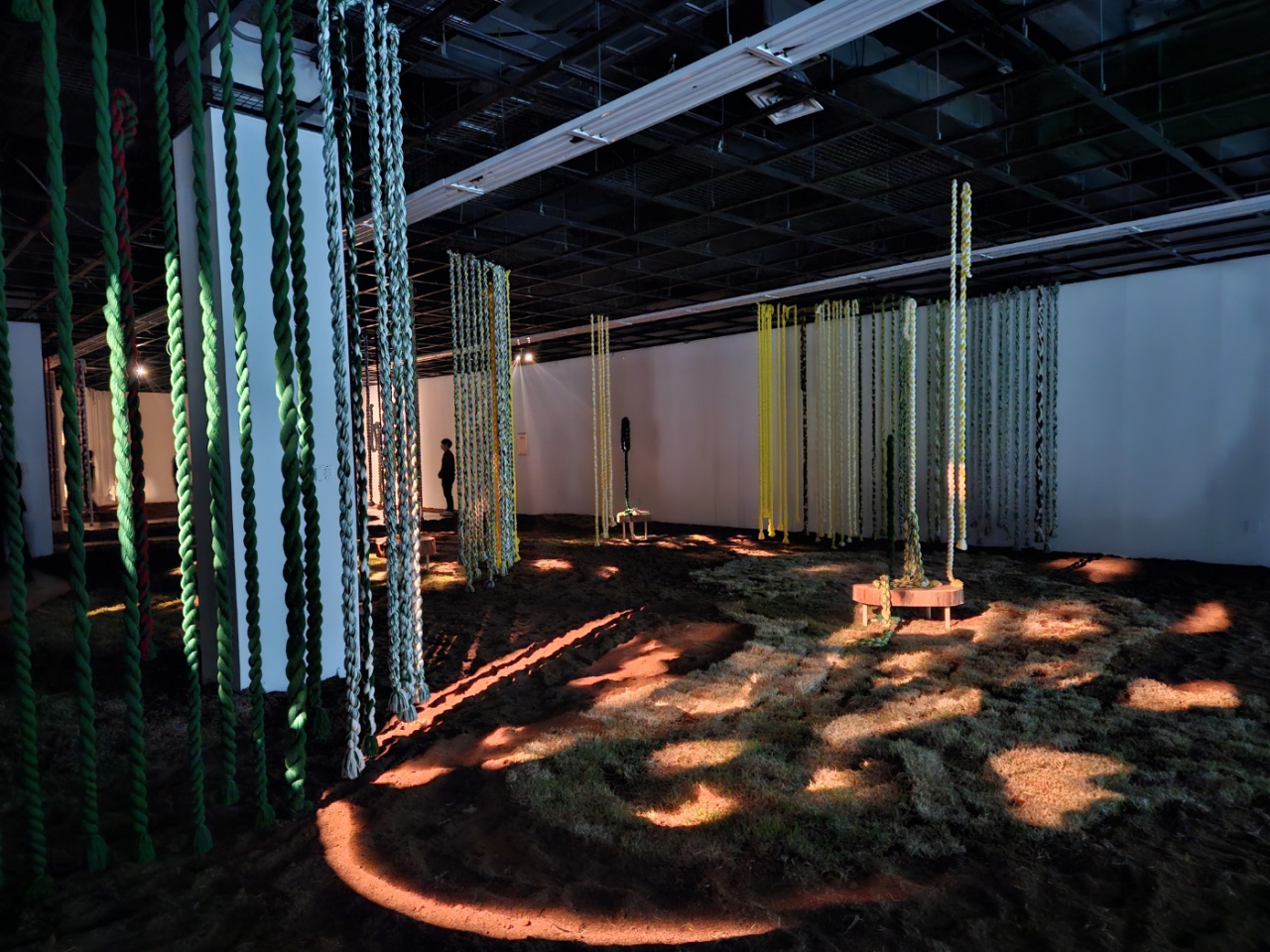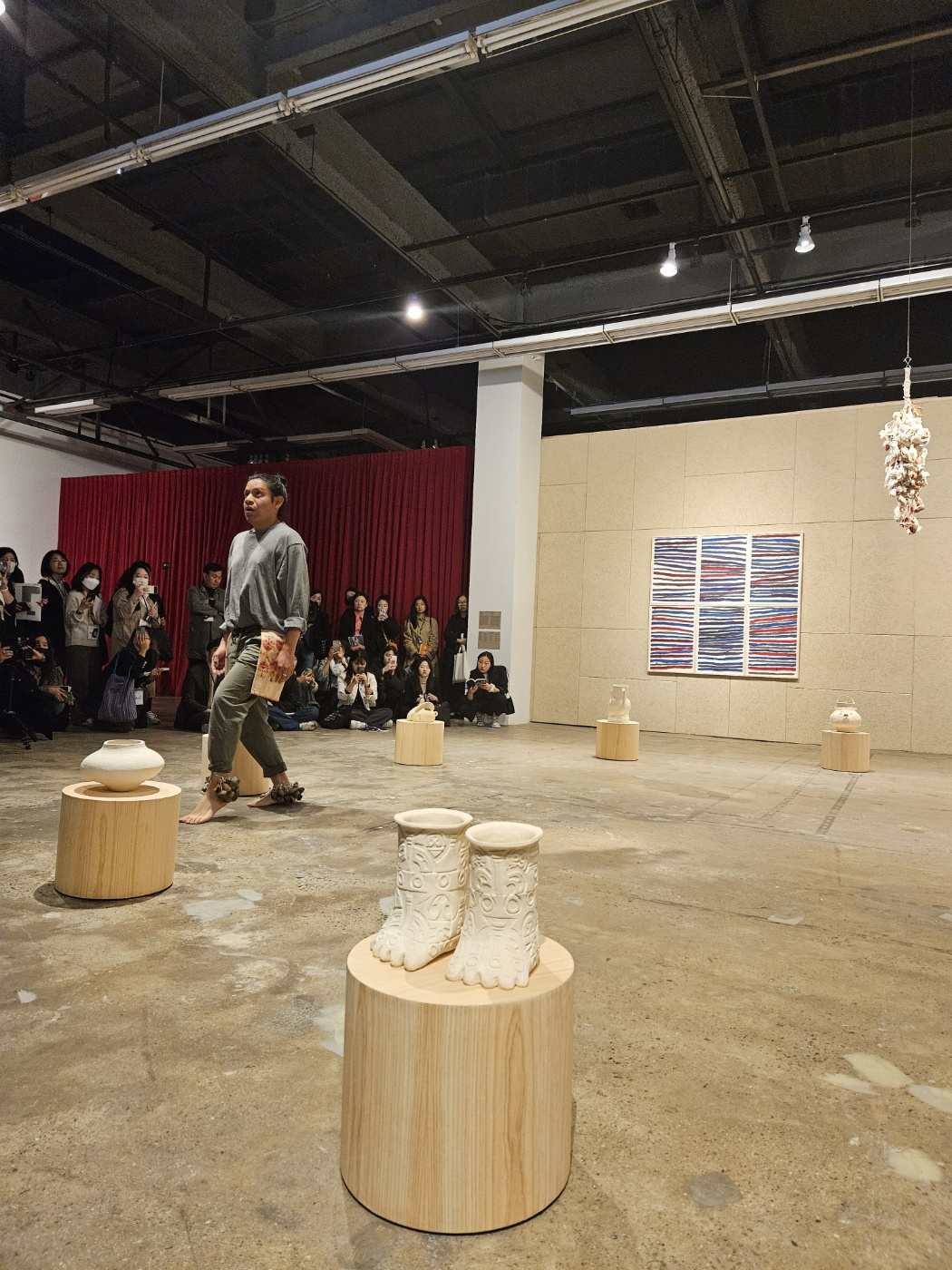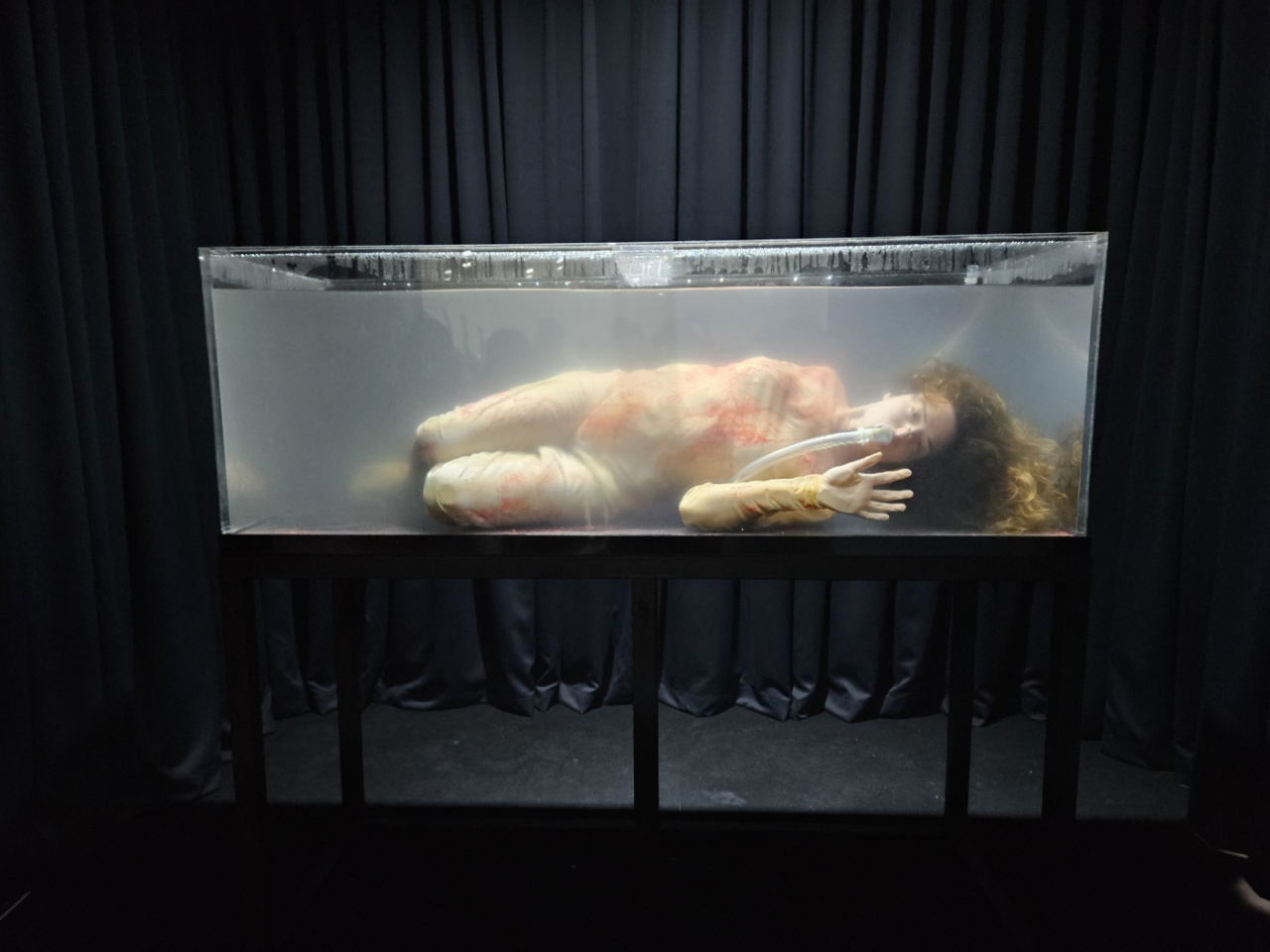Gwangju Biennale delivers transnational, trans-generational reconciliation
By Park YunaPublished : April 9, 2023 - 17:48

GWANGJU -- It was raining when the 14th Gwangju Biennale opened last Wednesday, a reflection of the biennale's theme: “Soft and weak like water.” As a symbol of democratic uprising decades ago, the city has been left with wounds.
Artistic director Lee Sook-kyung presented water as a metaphor for solidarity and recovery, bringing together 79 artists across the world whose works interpret the theme in transnational and trans-generational ways. The whole city will be filled with art for the next 90 days at five venues, including the Gwangju Biennale Exhibition Hall.
Lee said that she finds the meaning of "biennale" in contemporary times as a “very impactful and intense opportunity” to talk about social and cultural issues in a timely manner.

“I thought that a rapid response style of biennale format would still be quite valuable, regardless of what happens with other museums and art infrastructure. Artists are always quite quick in responding to certain social and cultural issues. The biennale will always be a great opportunity to see those things firsthand,” Lee said on Wednesday during a press preview. Lee is a senior curator of International Art at the Tate Modern.
Lee challenged visitors at the very start of the main exhibition with the “Encounter” section. It's a prelude to the biennale, with works by South African artist Buhlebezwe Siwani. The artist’s works are based on her personal memories and experiences training as a traditional healer and exploring the relationship between humankind and nature.
Siwani’s site-specific installation “An Offering (Umnikelo)” features wool ropes hanging over earth like vines, a reference to the belts worn by members of Zion churches in southern African countries during outdoor prayers. At the center of the hall is “The Spirits Descend,” a three-channel installation with a pool of water which reflects the screens and offers healing and hope.
In the other subtheme of “Luminous Halo,” the biennale shows how Gwangju’s May 18 Democratic Movement has inspired Korean artists and how such a fighting spirit for democracy, freedom and understanding can be seen in art internationally, from various different cultures.
Pangrok Sulap, a Malaysian collective of artists, musicians and social activists, conducted research into the history of South Korea’s woodcut printing and its relation to democracy. The works of woodcut prints on blackout cottons titled “Pangrok Sulap” were inspired by a question about whether the practice can still be relevant today.
The biennale continues with the subthemes "Ancestral Voices” and “Transient Sovereignty.” Mexican artist Noe Martinez’s “Bunch 3 (Racimo 3),” an installation of ceramic, porcelain and cotton rope, draws from the history of the artist’s Huastec ancestors trafficked by Europeans in the 16th century.

Martinez performed a ritual Wednesday with his own voice to invoke the ancestors to Gwangju and cure their traumas. “I am calling my ancestors,” shouted the artist as he walked around his work with ceramics tied to his ankles, creating percussion sounds.
The inaugural Park Seo-bo Art Prize -- also called the Golden Dove award -- went to Korean artist Oum Jeong-soon with prize money worth $100,000. The newly launched award will be given to an artist or collective from each biennale based on a jury system through 2042. As the leading contemporary art figure, Park donated $1 million to the prize last year to support talented artists.

Oum’s “Elephant Without Trunk,” a large-scale fabric installation, was made in collaboration with visually impaired students, suggesting different ways of perceiving the world. Visitors can touch the pieces to fully experience them.
Gwangju Biennale Pavilion
The biennale includes national pavilions from nine countries -- Italy, France, Ukraine, China, Canada, Israel, Poland, the Netherlands and Switzerland -- six more compared to 2018. The Italian National Pavilion, curated by Valentina Buzzi, showed five Italian artists’ works at Dong-gok Art Museum under the theme of “What does water dream, when it sleeps?” using the metaphor of water that nurtures, flows, erodes and destroys.

“We are happy to introduce the five artists presented at the Pavilion -- Camilla Alberti, Yuval Avital, Marco Barotti, Agnes Questionmark and Fabio Roncato -- embrace the element of water as a metamorphic and transformative agent, able to inspire to re-think the infinite possibilities of our relationship with nature, the environment and other forms of life,” said Michela Linda Magri, director of the Italian Cultural Institute in Seoul.
Park Yang-woo, president of the Gwangju Biennale Foundation, plans to expand the national pavilions to 20 next year, which marks the 30th anniversary of Asia's largest biennale.



















